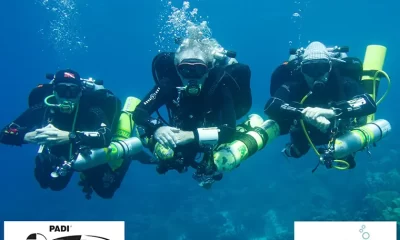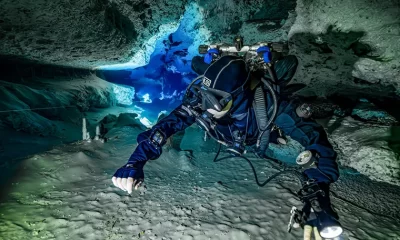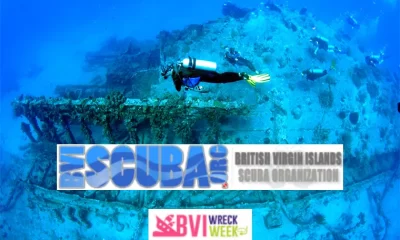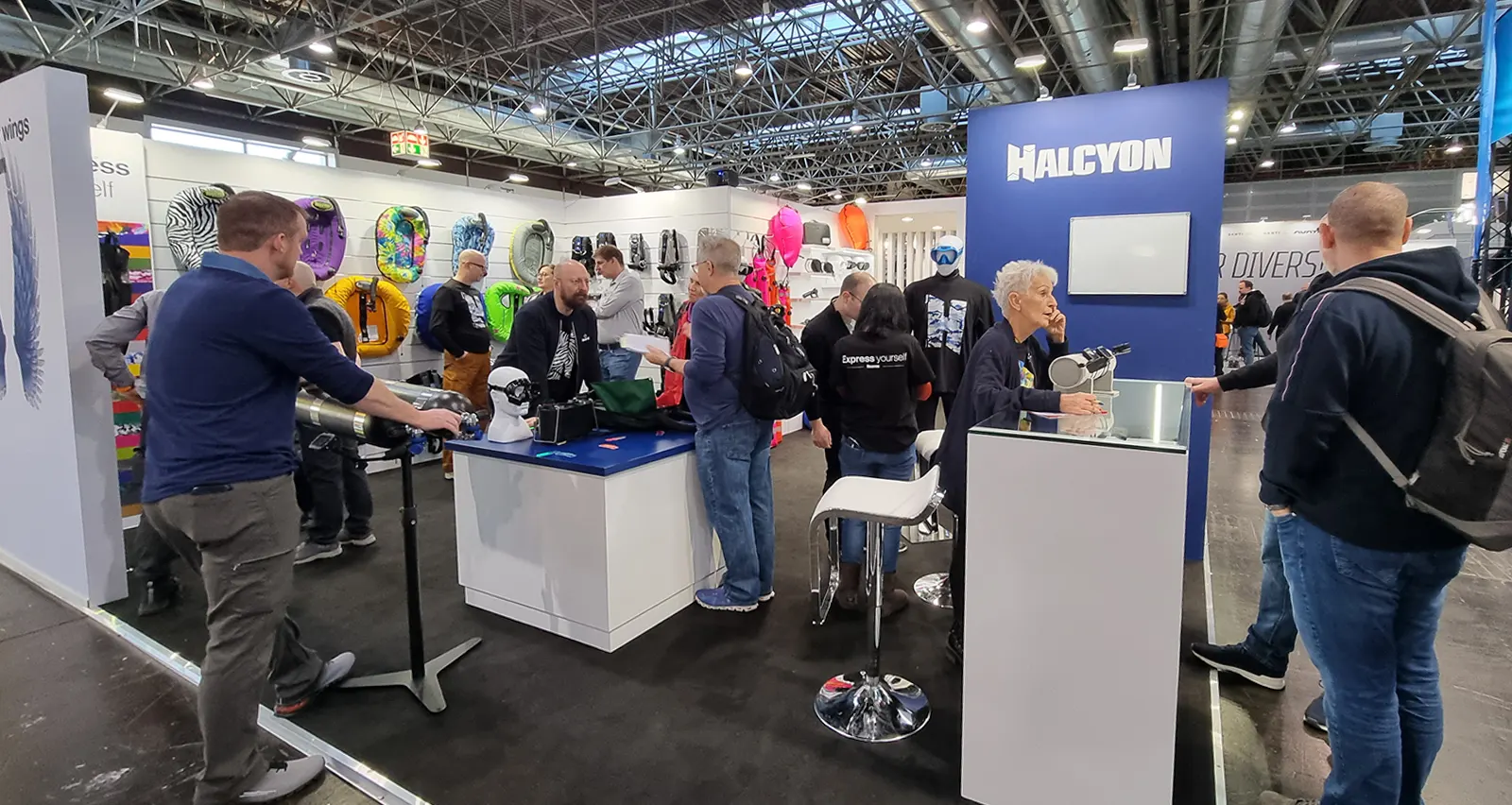

News
Sneak Preview: Halcyon Symbios Chest Mount and KISS Sidewinder 2
Text and images by Michael Menduno unless noted. Lead image: The Halcyon booth at Boot 2024. Photo by Asutay Akbayir.
The Buzz at Boot was Bainly on the Breathers!
Rebreather aficionados were abuzz over two new pre-production rebreathers that were unveiled at this year’s Boot Show, held in late January in Dusseldorf, Germany.
The first was an unexpected entry from Halcyon Dive Systems which displayed its new, innovative chest mounted electronic closed circuit rebreather (eCCR), created in collaboration with Dr. Arne Sieber, CEO and founder of Oxygen Scientific. The new eCCR, called the Symbios Chest Mount (CM) generated a constant stream of foot traffic over the course of the nine-day show.
Halcyon has manufactured its RB80 semi-closed rebreather (SCR), since the late 1990s, and more recently added the RB-K sidemount version, which can be used as a bailout rebreather. The Symbios—the name refers to the integrated electronics ecosystem—will be Halcyon’s first entry into eCCR. The company says it plans to offer both an oxygen model for the military, in addition to a mixed gas sport unit.
Chest mounted rebreathers have garnered significant traction over the last few years with the introduction in early 2020 of Dive Rite’s O2ptima Chest Mount, known affectionately as the “CHO2ptima,” and iQSub Technologies’ new FX-CCR, which was launched last year. Both eCCRs have dramatically reinvigorated the category, since French rebreather maker M3S introduced its Triton mechanical chest-mount (mCCR) in 2004.
Similar to other chest mounts, the Symbios CM, which weighs in at 7.5kg for travel and 10.5kg dive ready, incorporates an onboard oxygen cylinder and scrubber and utilizes offboard diluent cylinders in any number of configurations; single tank, double backmount or sidemount tanks.
Lots of Innovation
InDEPTH was given a detailed show floor briefing on Halcyon’s Symbios by British tech and CCR instructor John Kendall. From a 10 km perspective, the diminutive eCCR, which some breather geeks quickly dubbed the “HOPTIMA,” offers three major areas of innovation.
First, the Symbios CM features a unique integrated bailout valve (BOV) that is located at the chest, not in the mouthpiece, next to the diver manual add valves (MAVs). When the diver throws the bailout switch, which looks exactly like a diver surface valve (DSV) on the mouthpiece, the loop essentially becomes a double hose open circuit regulator.
In the absence of a bulky BOV on the mouthpiece, the breathing loop is significantly more flexible, easier to manage while scootering, and easier for photographers trying to hold a camera in their face.
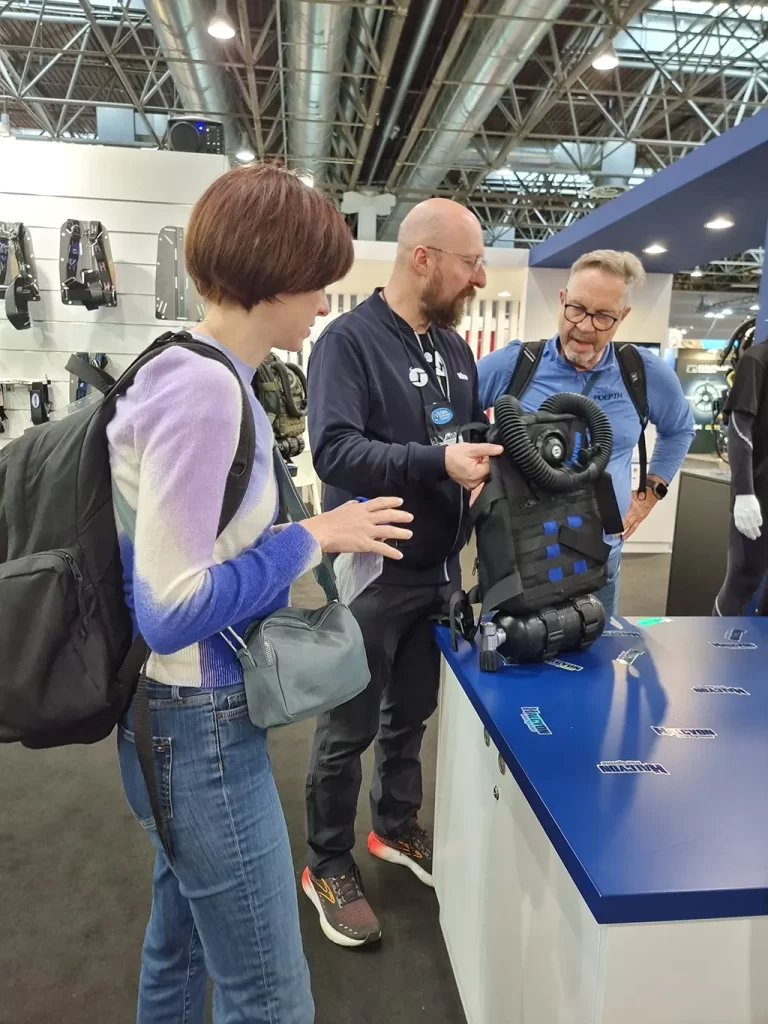

Second, the Symbios features cable-free wireless monitoring of cylinders, handset, and heads up display (HUD), making the configuration clean and tangle free.
Third, the rebreather uses three oxygen sensors, either Oxygen Scientific’s solid-state oxygen sensors or traditional galvanic sensors or a combination of both, providing true technological redundancy. In fact, Sieber discusses the concept in his paper, “Oxygen Sensor Technology for Rebreathers,” as does Nigel A. Jones, “PO2 Sensor Redundancy,” in the Rebreather Forum 3 Proceedings (see below). There is room in the head for a possible gaseous CO2 sensor in the future.
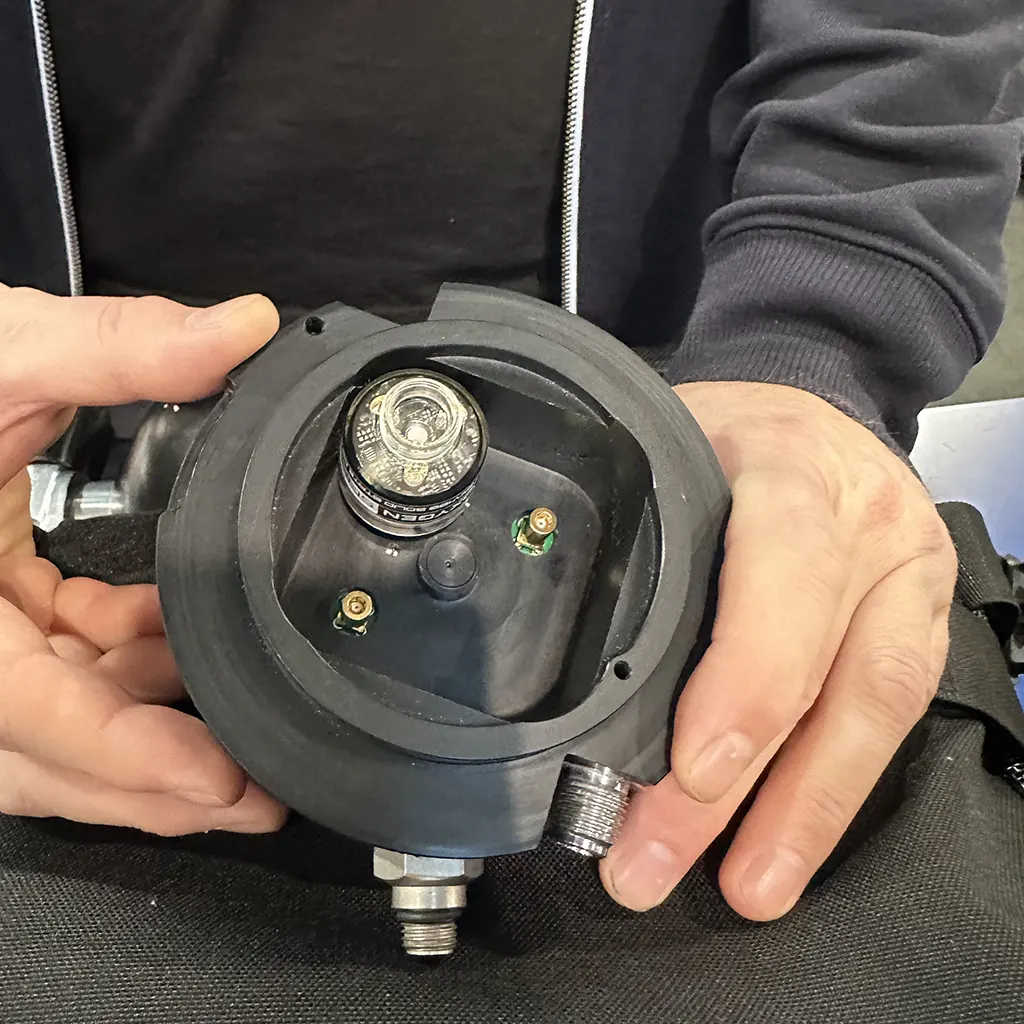
The Symbios wireless handset is an ultra slim profile, full-function diving computer developed by Sieber, that includes CCR, open circuit, and multi-gas decompression modes. Interestingly, if the diver activates the BOV, the software in the Symbios head automatically switches the computer to open circuit bailout mode, which is then reflected in the handset and HUD.
The computer includes a unique trim sensor and monitor, which measures divers’ degree of trim throughout the dive—no doubt inspired by Global Underwater Explorers (GUE). Ha! An angle of not more than 30% off trim will only earn you a Recreational Pass in GUE’s Fundamentals class, while 20%, and preferably less, will get you a Tech Pass. Rumors that Trim Police will have access to divers’ data through a secret backdoor in the system are wholly unfounded.
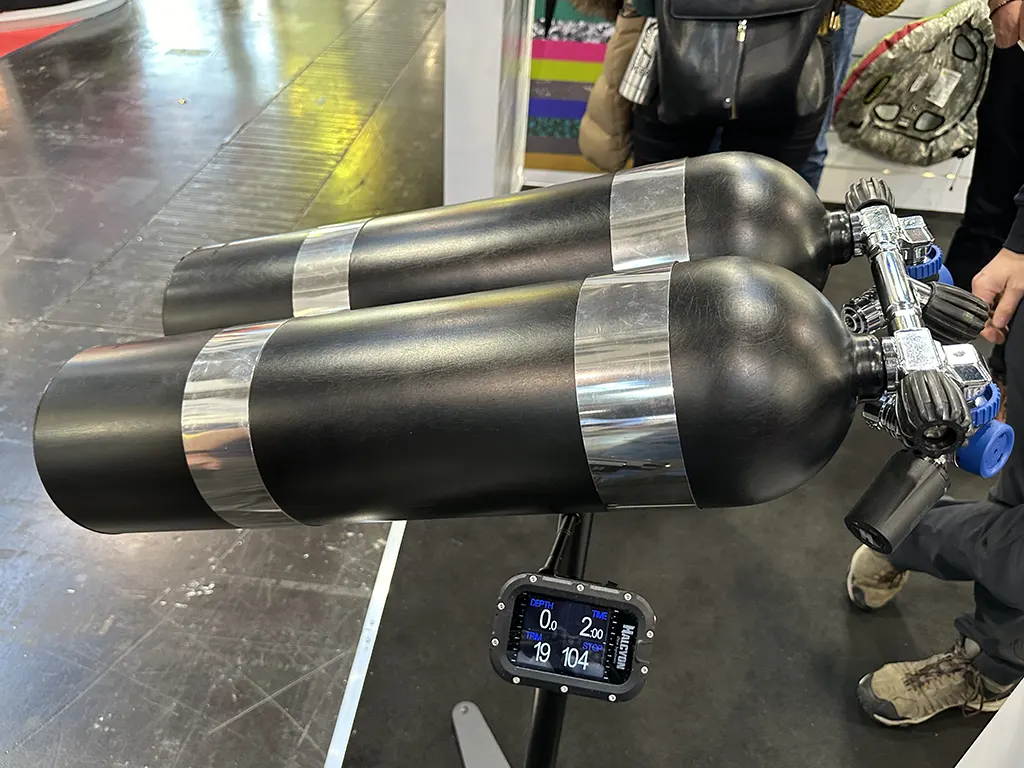
The Symbios ecosystem also includes a wireless HUD, that clips to the diver’s mask, and is a fully-functional dive computer in its own right.
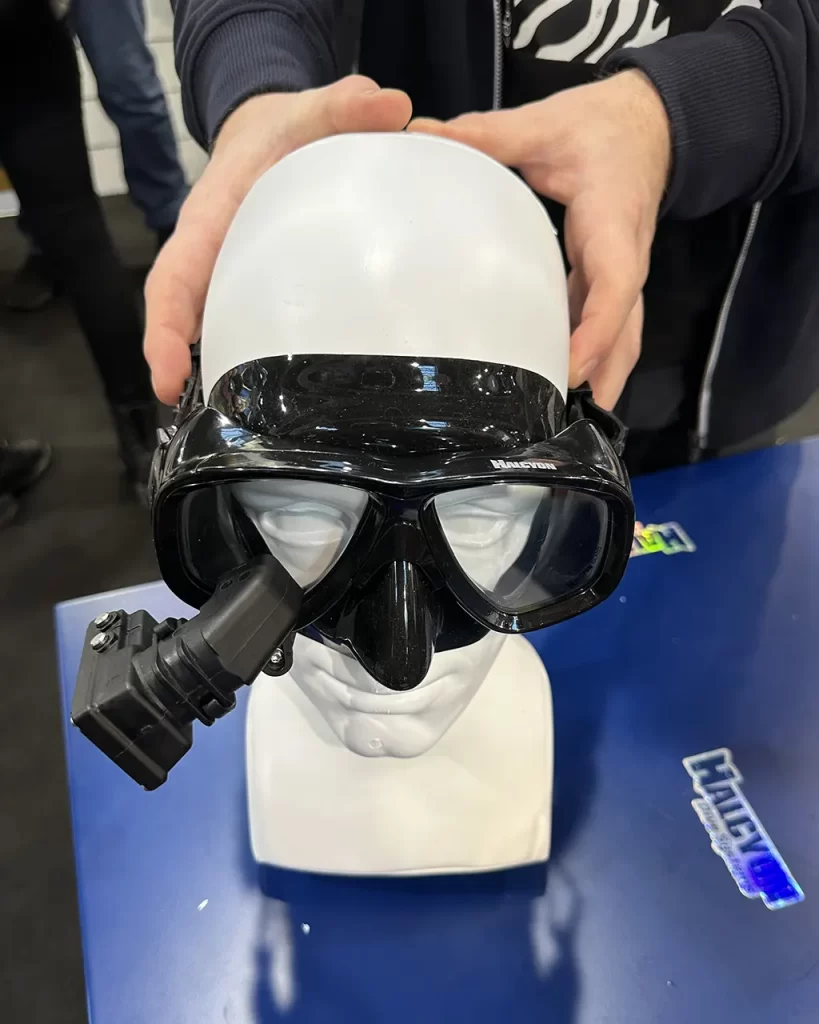
There is additional innovation in the HOPT rrr, Symbios CM counterlung and scrubber design. The axial scrubber, which holds 2.6kg of sodasorb, is designed so that the hot gas exiting the scrubber must back pass through the jacket cradling the scrubber to exit, thus insulating it from the ambient water temperature. In addition, the exhale counterlung is smaller than the inhale counterlung, minimizing heat loss from the diver’s exhalation.

The Future’s So Bright, I Gotta Wear HUDs
The Symbios is scheduled to begin CE testing very soon, and the company said noted chest mount units generally pass CE’s work of breathing (WOB) tests with ease. Halcyon has been through the process recently having received CE certification for its new sidemount system last summer. The company is planning to hold a Symbios CM instructor confab in May, 2024.
Not surprisingly, despite all the details, Kendall and Team Halcyon admitted that they were unable at present to answer the four basic questions that everyone wanted to know.
- Will GUE incorporate Symbios into its rebreather training offering?
- Will other agencies be allowed to offer Symbios training?
- What will Symbios cost?
- When will it be available for sale? [Halcyon said that the goal is late 2024.]
Sidewinder 2 At Last, Well Almost
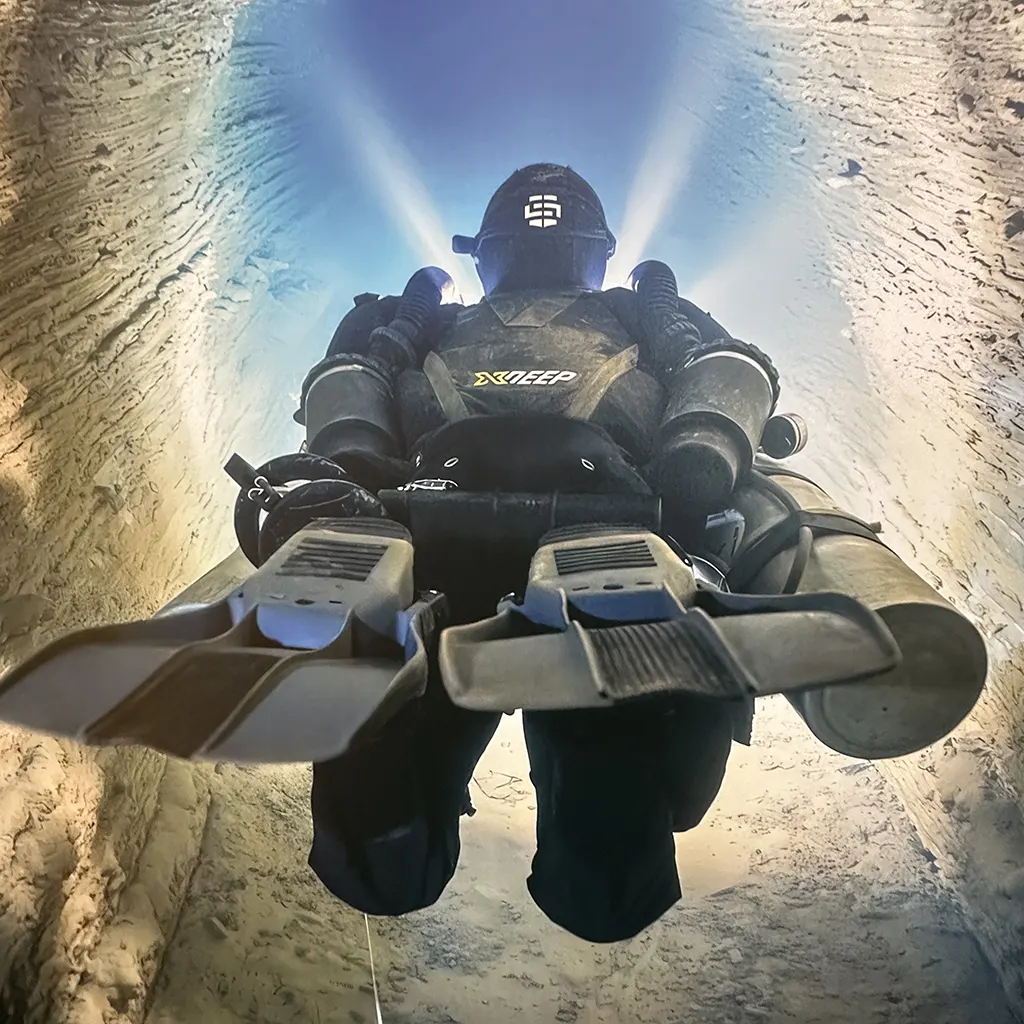
On the other end of the design spectrum, KISS’s much anticipated Sidewinder 2 (SW2) mCCR, had a continual crowd of interested tekkies and sport divers that kept the KISS team on their toes, especially KISS Training Director Patrick Widmann, who was deeply involved in the unit’s development.
Sidewinder 2 represents the next evolution of the popular KISS Sidewinder, which was introduced to the market about seven years ago. The mechnaical side-mounted rebreather was developed by KISS owner Mike Young for a wounded warrior named Joshua, who had lost both his legs.
The novel split-scrubber design with single counterlung, onboard oxygen and offboard diluent made it easy for Joshua to don and doff and stay balanced in the water. This was true for other, able-bodied divers as well, which helped drive the Sidewinder’s popularity.
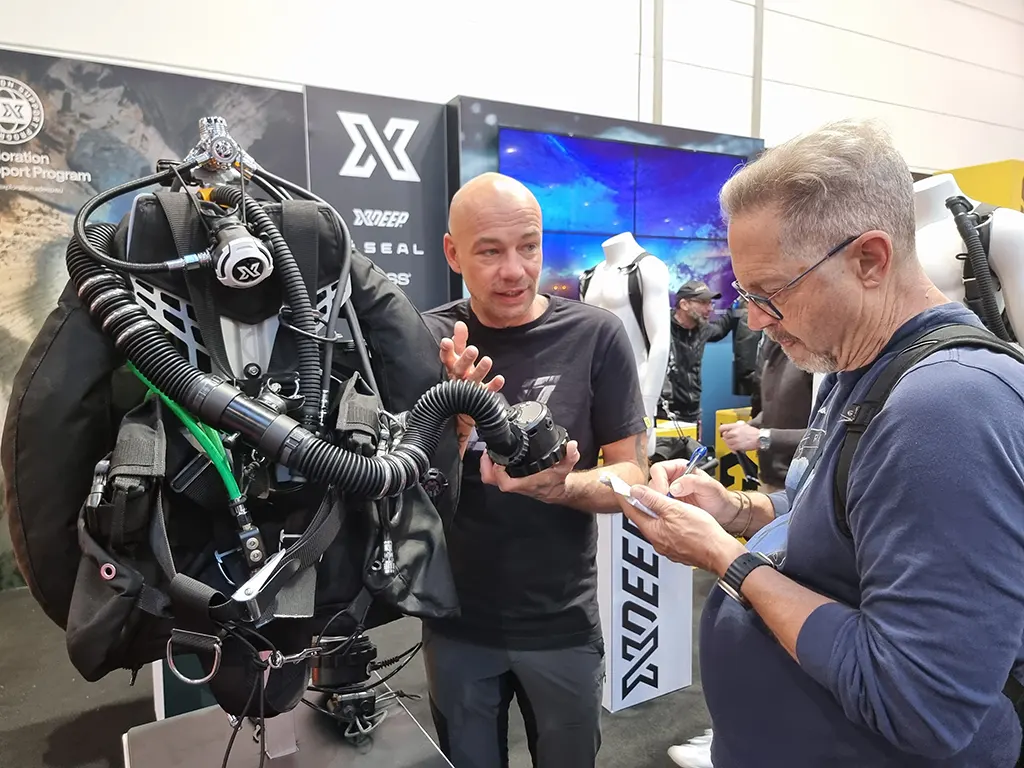
Like the back-mounted KISS Classic, the Sidewinder, and Sidewinder 2 rely on the KISS’s mass flow orifice to deliver a constant flow of oxygen into the loop to match divers’ metabolic consumption of about 0.7 L/minute on average for adults. The diver can then adjust their PO2 if needed using the manual add valve. Accordingly, the mass flow orifice is limited to 90m/295 ft or 10 bar of ambient pressure with the standard orifice, because of the valve’s internal pressure (IP). The original Sidewinder was never CE tested or certified.
Widmann fell in love with the Sidewinder, so did Darkwater Group founder and CEO, Piotr Czernik. In 2020, the Darkwater Group, which also owns XDEEP and SEAL Drysuits, purchased KISS with the idea of incorporating Czernik and Widmann’s design ideas, and getting the new unit CE certified. The two have developed a completely new unit while keeping Young’s original idea of the split scrubber. KISS instructor trainer Jacek Konikowski gave InDEPTH an in-depth briefing at the show.

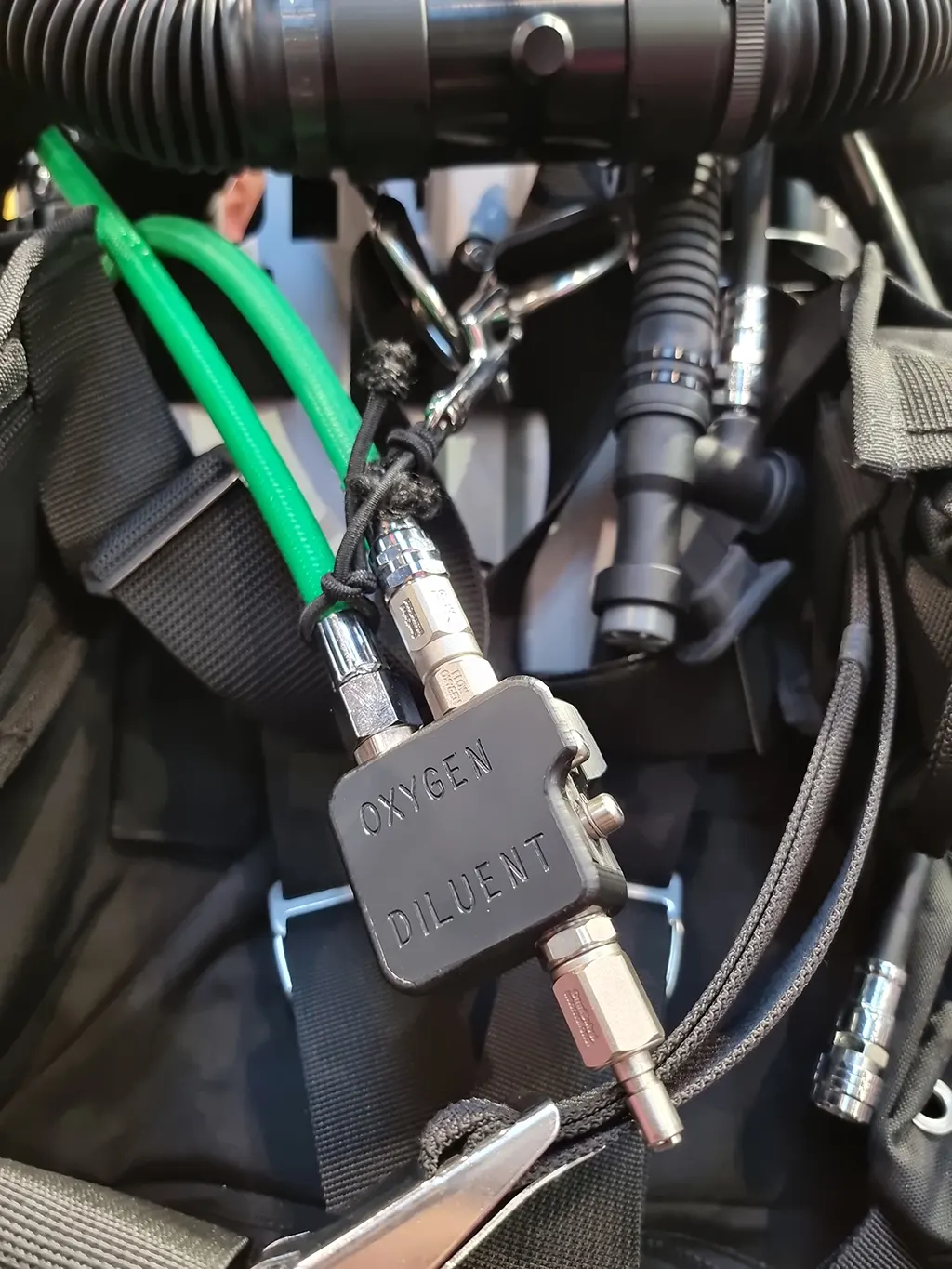
New and Improved
First, the Sidewinder 2 is more modular than its predecessor. It can be used with either a single back mount cylinder—Widman reported major interest in this configuration by reccies at the show—or twin sidemount tanks. The two configs use slightly different counterlungs, but the core parts, like the head, canister, and loop remain the same. The roadmap allows for the possibility of seamless expansion to eCCR in the future, by adding the specific module, without the need to replace any parts. Together with the harness/bcd/weight system the units weigh 13 kg for sidemount and 15 kg for the single tank back mount.
The new SW2 split scrubber design incorporates square injection molded canisters, which clip into the backplate, and hold 3.5kg of sorb vs 2.2kg in the original SW.
The new scrubber canisters are neither axial or radial, but a novel patent-pending flow design that KISS calls “cross flow,” which the company said results in much better cold water capabilities and significantly reduces WOB. The new canisters with their side-loading feature are also resistant to dangerous “gas channeling” and eliminate the risk of mistakes when pouring absorbent.
The canisters are insulated and have double gas-filled walls to maintain heat in the system. According to CE tests that have been done by Dekra Laboratory in Germany, the scrubber has a duration of 4.5 hours at 40 m depth (profile) in a 4º Celsius.
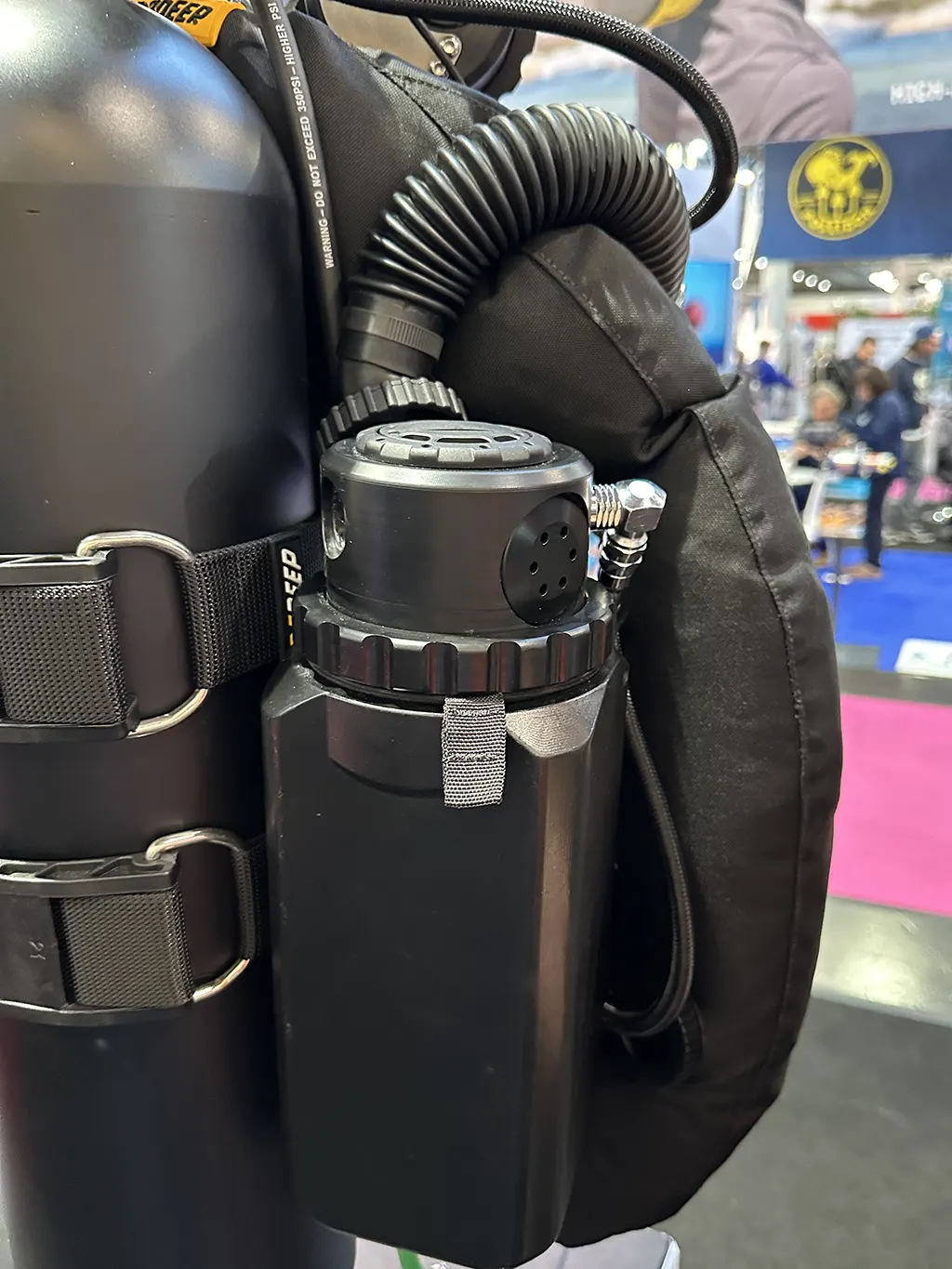
The Sidewinder 2 head uses three Molex sensors, which plug directly into the circuit board eliminating cumbersome wires which could get twisted or pinched. The connectors are completely sealed with the patent-pending system to prevent the common problems when the sensors come into contact with caustic water. There is also space for a CO2 sensor in the future. The unit incorporates a Shearwater Petrel for monitoring and computing decompression.
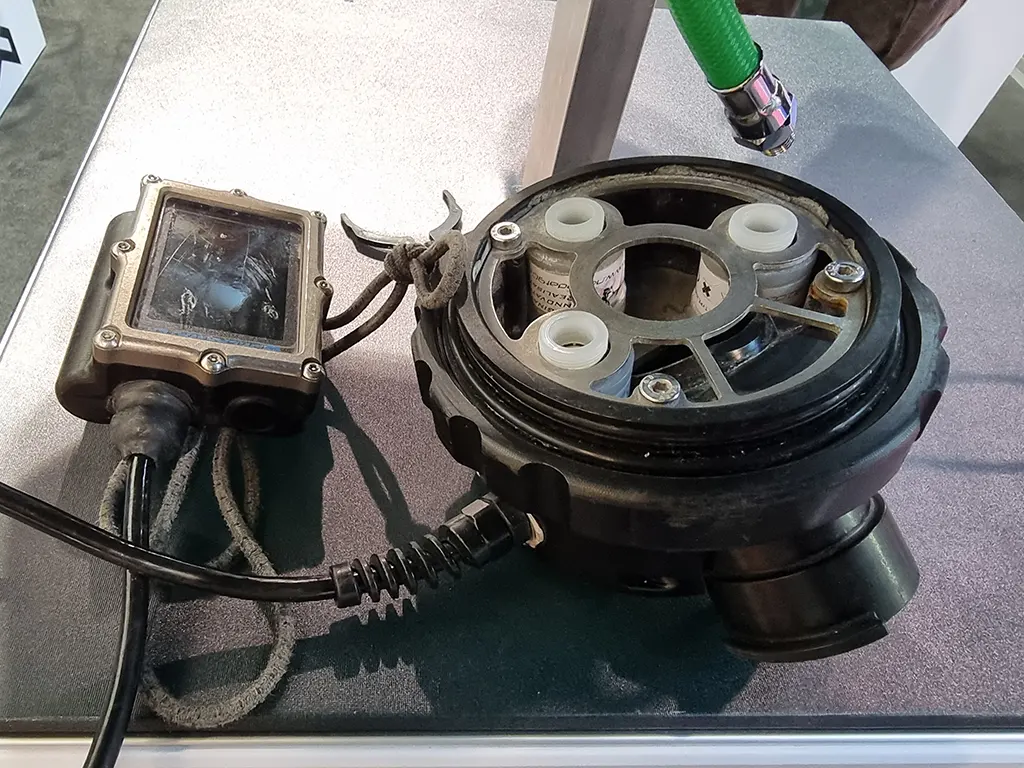
In addition, the SW2 has a few notable differences and improvements compared to its predecessor. First, KISS has added a water dump in the ADV head; the original had none. The new automatic diluent add valve (ADV) is adjustable like a second stage regulator. KISS also changed the Apeks valve, used in the previous version, to a completely new “flush valve” to dump gas from the loop when in bailout mode, and developed a new “revolver-style” two-button MAV for O2 and diluent.
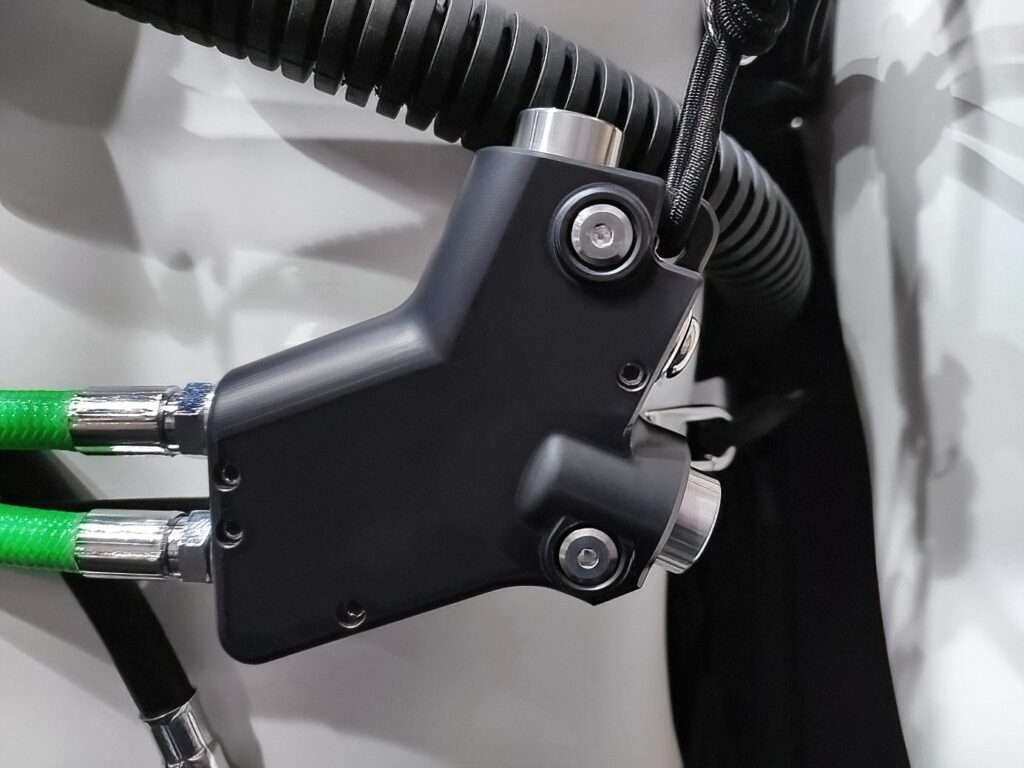
SW2 will continue with CE testing within next months, and is expected to be available for instructors in mid-2024 and consumers sometime after that. Though a final price has not been set, the company said that it expects to price the SW2 at less than the €7K (US$7551) price of the original Sidewinder, somewhere between €6K-€7k ($6472-$7551).
We will continue to report on the developments of these and other rebreathers, and keep you in the loop!
DIVE DEEPER
InDEPTH: The RB80 Semi-closed Rebreather: A Successful Exploration Tool by David Rhea
InDEPTH: Keep It Simple Sidewinder By Jake Bulman and Skanda Coffield.
InDEPTH: The Love-Hate Relationship Between CCR & CE Marking by Florine Quirion
InDEPTH: InDEPTH’s Holiday Rebreather Guide 2023
InDEPTH: What Happened to Solid State Oxygen Sensors? by Ashley Stewart
Rebreather Forum 3 Proceedings: Oxygen Sensor Technology for Rebreathers by Dr. Arne Sieber
Rebreather Forum 3 Proceedings: PO2 Sensor Redundancy by Nigel A. Jones
Seabear Diving Technology: O2 Sensors

Michael Menduno/M2 is InDepth’s editor-in-chief and an award-winning journalist and technologist who has written about diving and diving technology for more than 30 years. He coined the term “technical diving.” His magazine “aquaCORPS: The Journal for Technical Diving” (1990-1996) helped usher tech diving into mainstream sports diving, and he produced the first tek.Conferences and Rebreather Forums 1.0 , 2.0 and 4.0. In addition to InDepth, Menduno serves as Senior Editor for DAN Europe’s Alert Diver magazine, and writes for DeeperBlue.com. He is a member of the Rebreather Training Council (RTC).


















